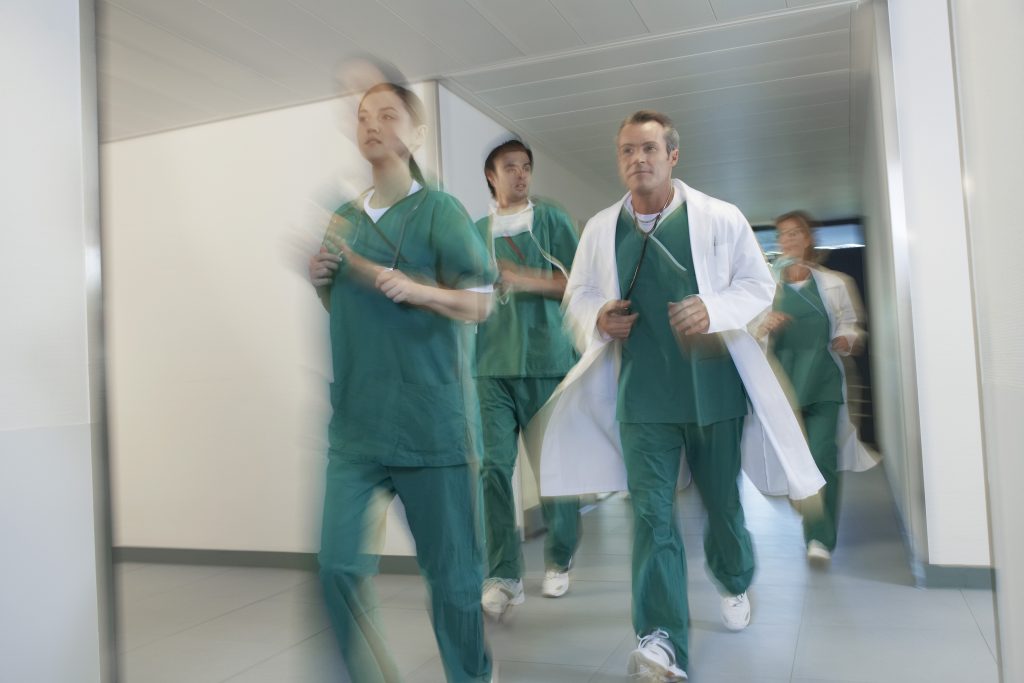Learn FAST and Save a Life
 I was sitting with my grandma at a family wedding, chatting about her newest great-grandchild. Suddenly, Grandma started slurring her words. At first I thought she had simply gotten distracted, but when she repeated herself it sounded like she was gargling water.
I was sitting with my grandma at a family wedding, chatting about her newest great-grandchild. Suddenly, Grandma started slurring her words. At first I thought she had simply gotten distracted, but when she repeated herself it sounded like she was gargling water.
I asked her if she was okay, and she nodded and tried speaking again. Nothing but garbled sounds came out. The word FAST flashed through my mind: the signs of a stroke. S stands for Slurred Speech. Was my grandma having a stroke?
“Grandma, are you okay?” I nearly shouted at her. She turned toward me again, and said clearly, “I’m fine.” But I saw her face was completely lopsided; the entire right side of her face was pulled downward. F stands for Facial droop.
My sister, a registered nurse, was standing nearby. I called her over, but Grandma’s face had already returned to normal. My sister crouched next to my grandma and asked her to lift her arms. Her left hand went up instantly, but her right hand stayed stubbornly on her lap. Grandma looked at her uncooperative hand in horror. A stands for Arm weakness.
T stands for Time to call 911. We called.
By the time the ambulance arrived, Grandma was able to move her right hand. She insisted on walking to the parking lot to meet the paramedics, because she didn’t want to make a scene at her grandson’s wedding. The paramedics examined her and took her to the emergency room—evening gown and all—for immediate evaluation.
Thankfully, it turned out my grandma had a TIA, also known as a mini-stroke, and she returned home the next day. But the experience left me shaken. I was glad I recognized the event as soon as it happened, but I realized many people don’t know the signs of stroke.
It’s February, American Heart Month, when we raise awareness for all sorts of heart-related conditions, stroke included. Here is everything you need to know about strokes:
What is a stroke?
A stroke, or cerebral vascular accident (CVA), happens when an area of the brain loses its blood supply. This can occur when an artery in the brain becomes blocked (called an ischemic stroke), or when a blood vessel leaks or bursts (hemorrhagic stroke). The symptoms and severity depend on how much brain tissue is deprived of blood. A mild CVA can cause temporary weakness of an arm or leg, while a more severe stroke can cause permanent paralysis.
A transient ischemic attack (TIA) is called a mini-stroke. This happens when the blood flow to the brain is temporarily stopped. In a TIA, the symptoms go away as soon as the blood flow resumes. Usually there are no permanent effects. However, an individual who had a mini-stroke is at risk for future TIAs or even a full-blown stroke. When a TIA occurs, doctors will run tests to see why it happened and how to minimize the risk of future episodes.
Both strokes and mini-strokes carry the same risk factors as heart attack and heart diseases. These include smoking, high blood pressure, high cholesterol, diabetes, and family history. A stroke is to the brain what a heart attack is to the heart; they are both caused by narrowing or blocked blood vessels.
If you think someone is having a stroke, act FAST
FAST is a handy acronym to remember the three classic signs of stroke:
- F—facial droop: one side of the face is plainly lower than the other. If you’re not sure, ask the person to smile; the drooping will be much more noticeable.
- A—arm weakness: ask the person to raise their arms. One-sided arm weakness will mean they can’t raise their arm, or it drifts downward after they raise it.
- S—speech difficulty: sudden slurred speech or difficulty speaking is a warning sign of stroke. Ask the person to repeat a simple sentence and check if they have difficulty with it.
- T—time to call 911: call 911 if any of the symptoms are there, even if they stop. This person needs medical attention immediately.
Someone having a stroke can have all the symptoms at once, or one at a time, like my grandma had. They may show only one or two of the signs, or all three may be present very slightly. Call 911 right away, even if they insist they’re fine.
Because CVAs can affect different parts of the brain, they can cause disruptions to any neurological function. Here are some other symptoms of stroke to be aware of:
- Weakness or paralysis of any part of the body, especially if onset is sudden
- Sudden numbness or a “pins and needles” sensation
- Trouble walking, loss of balance, or loss of coordination
- Sudden vision changes
- Dizziness
- Confusion or memory loss
- Extremely severe headache, sometimes referred to “the worst headache of your life”
- Inability to understand speech
- Behavioral changes
Stroke Treatment
Ischemic strokes can often be treated with a therapy called tPA that dissolves the clot and restores blood supply to the brain. For most patients, this therapy can only be administered within 3 hours from the onset of symptoms. Time is of essence in those cases, which is why it’s so important to remember FAST.
After a stroke, patients may be left paralyzed or unable to speak and will require intense rehabilitation to recover. Using physical, occupational, and speech therapy, patients can often regain some or all of their abilities. The quicker a stroke is identified and treated, the greater the chance of recovery, so again, remember FAST.
